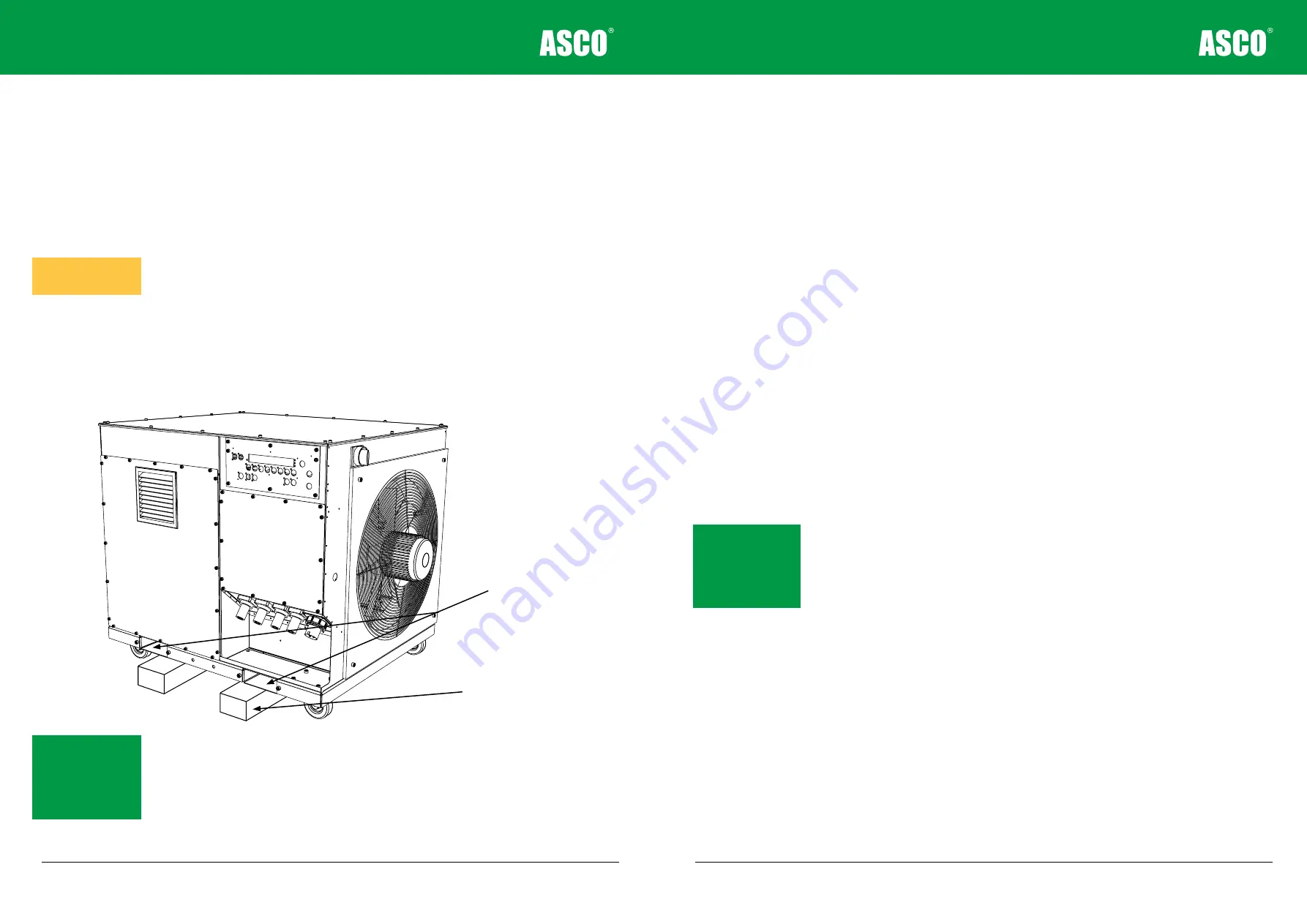
Transporting ASCO Load Banks
ASCO Sigma LT load banks will vary in weight depending on the model. Make sure you
check the load bank name plate for the correct weight. Sigma LT load banks have fork lift
pockets and/or castors. Only lift from the forklift pockets and no where else.
Lifting by forklift truck
Check the specifications to ensure that the forklift truck has sufficient capacity to safely
lift the weight. Add 5% to the specified weight for minimum packing, and 15% for a unit in
an export wooden case.
Protection and securing on transport
If a load bank is carried on an open goods vehicle, it should be covered with a tarpaulin, or
a similar to stop the wind from driving the fan.
Figure 2-1
Castor-mounted load banks should be supported off the castors and firmly fixed
down
2 - 4
Note:
Do not tie straps
over the top of the load
bank. The tie-down
should be made through
the pockets in the fork-
lift pocket base only.
Castor mounted load banks
should be supported off of the
castors during transport. Use
wooden blocks for this purpose.
Use the forklift pockets to
tie down the load bank
2 - 5
Setting up ASCO Sigma LT Load Banks
There are a number of factors that need to be considered before you select a load bank
for a particular application. Obviously it is important to ensure that the load bank has
sufficient electrical capacity to test the supply, but you also need to ensure that it can
operate correctly and safely in the position you have chosen.
Location
The first thing to decide when setting up a load bank is where the unit is to be located. You
need to consider the following to ensure that the unit can be operated safely:
Environment.
Sigma LT load banks are designed for indoor use only. A standard Sigma
LT load bank can be used in an ambient temperature between -10°C and +40°C, at 90%
relative humidity (non condensing), and at altitudes up to 1000m above sea level.
Loading.
The load bank is heavy and must be setup on a level surface that is capable of
supporting its weight (see nameplate).
Space.
There must be sufficient space to provide access for maintenance to all of the
panels and the protective inlet and outlet grilles. There must be at least one metre of clear
space on the air intake side of the load bank (the fan side) and five metres of clear space
on the air outlet side. See the appendices of this manual for the specific requirements of
individual units.
Airflow requirements.
When it is operating a Sigma LT load bank can require up to 10 m
3
of cooling air per second. As it passes through the unit, the air becomes hot enough to
provide a risk of fire or personal injury.
When setting up the unit you need to make sure that there is adequate air available, that
it can be discharged safely, and that there is no risk that the hot air will recirculate to the
air intake of the unit.
Note:
If necessary,
a barrier should be
erected around the hot
air outlet to prevent any
possibility of personal
injury.
Warning! Avoid walking
on the roof of the unit.
Chapter Two
Load Bank Setup













































